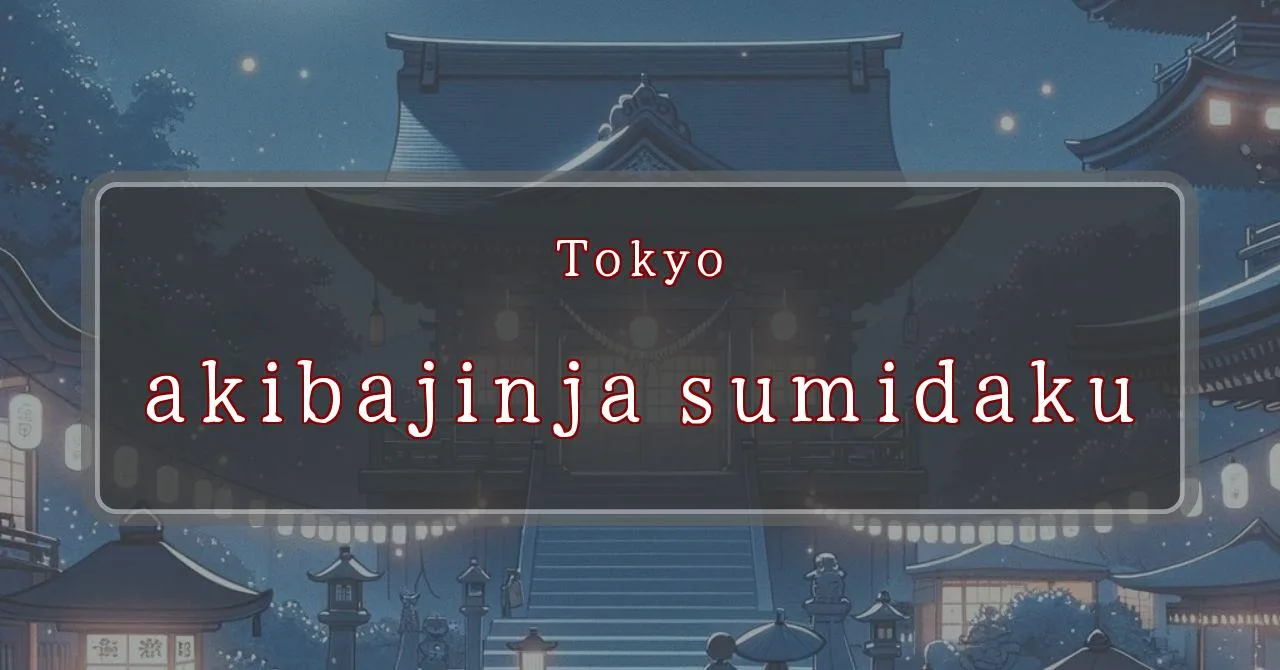A sacred festival of fire and purification in Tokyo.
Basic Information
Akihabara Jinja Shrine is a Shinto shrine located in Mukojima, Sumida Ward, Tokyo, Japan.
- Address: 4-9-13 Mukojima, Sumida-ku, Tokyo 131-0033
- Phone Number: 03-3622-5502
- Access: 8-minute walk from Higashi-Mukojima Station on the Tobu Skytree Line
- Festival Days: November 17th (Sun) and 18th (Mon), 2024
Main Events and Attractions of the Festival
The Akihabara Jinja Shrine Festival is a two-day annual event held on November 17th and 18th. The festival features a variety of events and attractions, including:
Mikoshi Procession
On the first day of the festival, a mikoshi (portable shrine) procession takes place. The mikoshi is carried through the streets of Mukojima by local residents and festival participants. The procession is accompanied by music and dancing, and it is a lively and colorful event.
Kagura Performance
Kagura is a traditional Japanese Shinto dance and music performance. During the Akihabara Jinja Shrine Festival, kagura performances are held at the shrine on both days of the festival. The performances are a beautiful and sacred way to experience Japanese culture.
Food Stalls
A variety of food stalls are set up at the festival, offering a wide range of Japanese and international cuisine. Visitors can enjoy everything from traditional Japanese dishes like yakitori and takoyaki to more modern fare like hamburgers and pizza.
Games and Activities
There are also a number of games and activities for children and adults to enjoy at the festival. These include traditional Japanese games like ring toss and goldfish scooping, as well as more modern games like face painting and balloon animals.
Fireworks Display
On the second day of the festival, a fireworks display is held at the shrine. The fireworks display is a spectacular sight, and it is a fitting way to end the festival.
Blessings and Deities
Akihabara Jinja Shrine is dedicated to the deities of fire prevention, industry, and matchmaking. The main deity of the shrine is Hi-no-Kagutsuchi-no-Mikoto, the god of fire. Other deities enshrined at the shrine include Uka-no-Mitama-no-Mikoto, the god of agriculture and industry, and Omono-nushi-no-Mikoto, the god of matchmaking.
- Hi-no-Kagutsuchi-no-Mikoto: God of fire
- Uka-no- and History
The origins of Akihabara Jinja Shrine are unclear, but it is believed to have been founded in the 13th century. The shrine was originally a small Inari shrine, but it was later expanded and dedicated to the god of fire, Hi-no-Kagutsuchi-no-Mikoto. The shrine was destroyed by fire several times over the centuries, but it was always rebuilt. The current shrine building was constructed in 1966.
- Founded: 13th century
- Originally an Inari shrine
- Dedicated to Hi-no-Kagutsuchi-no-Mikoto, the god of fire
- Destroyed by fire several times
- Current shrine building constructed in 1966
Tips and Notes for Visitors
Here are some tips and notes for visitors to the Akihabara Jinja Shrine Festival:
- The festival is held on November 17th and 18th.
- The festival features a variety of events and attractions, including a mikoshi procession, kagura performances, food stalls, games, and activities.
- The festival is a popular event, so it is important to arrive early to avoid crowds.
- The shrine is located in a residential area, so please be respectful of the local residents.
- There is a small parking lot at the shrine, but it is limited to a few cars. It is recommended to use public transportation or park in a nearby parking lot.
Parking Information
There is a small parking lot at the Akihabara Jinja Shrine, but it is limited to a few cars. It is recommended to use public transportation or park in a nearby parking lot.
- Parking lot at the shrine: Limited to a few cars
- Recommended to use public transportation or park in a nearby parking lot
Popular Stalls and Food Carts in Recent Years
Type of Stall Description Takoyaki A staple at Japanese festivals. Characterized by a crispy outside and a creamy inside. Jaga Butter A simple yet popular snack of hot potatoes lavishly topped with melted butter. Baby Castella Small castella cakes, sweet and fluffy treats enjoyed by children and adults alike. Grilled Ayu with Salt Fresh ayu fish grilled whole with salt, a savory taste of Japanese summer. Shaapin A unique gourmet item influenced by foreign cuisine, with a chewy skin wrapping the filling. Okonomiyaki A Japanese grilled dish where you often choose your own ingredients for a personalized flavor. Cotton Candy A fluffy, sweet snack that’s extremely popular with children. Chocolate Banana A banana coated in chocolate, a fun and visually appealing dessert. Kushiyaki Various types of ingredients skewered and grilled, an easy-to-enjoy snack. Yakisoba Fried noodles mixed with a special sauce, a fast food favorite in Japan.



